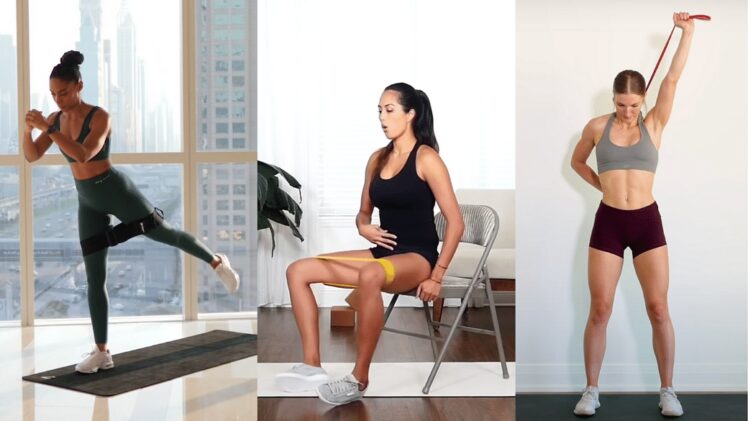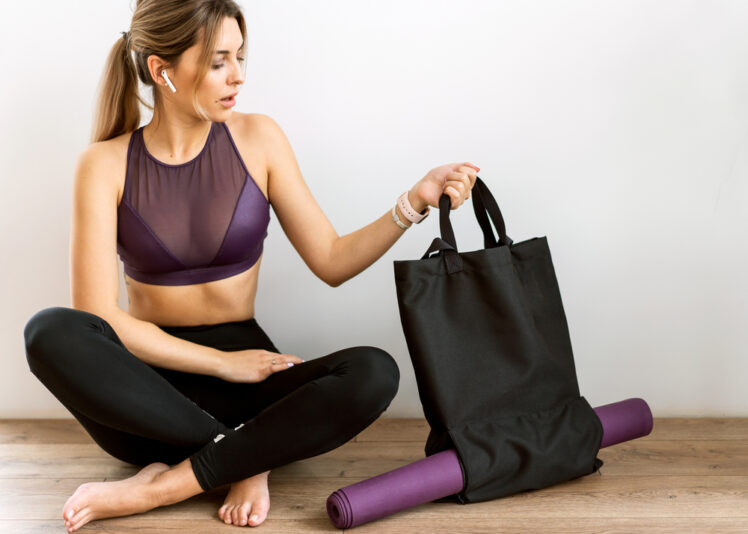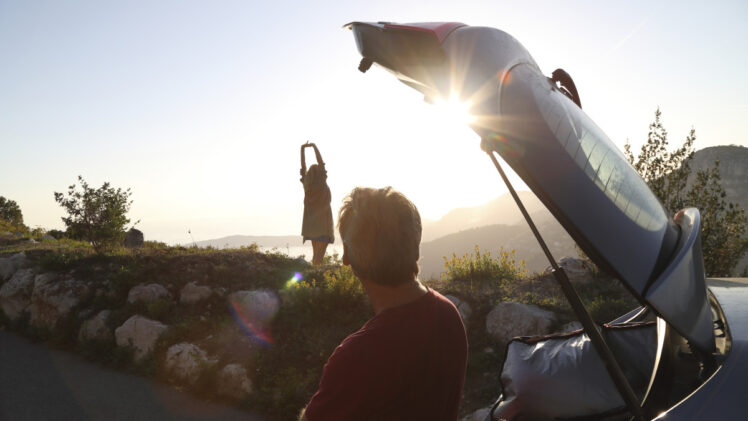Travel-Friendly Fitness: Top Stretching Equipment for On-the-Go Routines

Vacations juxtapose exhilarating explorations of exotic locales, and the opportunities they bring, with the mundane realities of cramped economy class cabins or lengthy road trips confined to car seats. Then there are the long days on your feet touring historic sights, or carrying luggage across airports and train platforms.
Hotel gyms with sparse equipment and improvised outdoor training zones pose challenges for even the most diligent exercise enthusiasts seeking training continuity away from home. No wonder many travelers default to indulgent relaxation mode, despite their ambitions to remain active, after waking up groggy and sore from restless sleep in unfamiliar beds.
Maintaining your fitness routine and flexibility goals while traveling keeps your body feeling its best on long flights, car rides or busy work trips. It also means you can continue working on your other goals.
The world isn’t going to stop because you are in transit. In order to meet the challenges which await you at the end of your journey, whether they are leisure or work related, you need to be in the best condition you can, as opportunities won’t look at you twice unless you make them.
You can limber up even in transit, and avoid vacation lethargy, with our recommendations for alleviating jet lag, back pain from poor posture and full-body soreness while you are exploring new destinations. We all know what it’s like to have our effectiveness limited by our environment, now it’s time to fight back.
What you’ll Need

Source: womensweekly.com.sg
You can never take everything with you, but your definition of essentials should also include the appropriate fitness gear.
Yoga gear like a multi-use yoga towel and stretching straps will take up minimal luggage space. The ultra-compact CastleFlexx back and leg stretcher is also ideal for undertaking personalized assisted stretches without the need of a partner.
Resistance bands are essential for travel-friendly strength training at hotels, Airbnbs or outdoors. Offline yoga and guided stretching apps will only take up phone space, and give you the opportunity to enjoy a sun salutation on a secluded beach!
Sudden schedule changes and spontaneous exploration opportunities need not interfere with set exercise routines. It is possible to condense full routines into 15 minute sequences almost anywhere, with small footprints.
Minimizing Luggage Load

Source: yogapractice.com
Packing ultra-compact stretching gear taking minimal space will help you maintain consistent range of motion and mean you won’t have to sacrifice wellness goals for wanderlust whims. You don’t have to break the carriage requirements to have all you need for your purposes.
First priority – Dual purpose tools with double utility should be the first things packed. These would include resistance bands, which have multiple uses and offer many progression levels from beginner tensions to extremes which challenge professional strongmen.
You need to secure these latex or silicone bands when not in use to prevent snapping recoils. Therefore they should be repacked accordingly, in the same place, after use.
Yoga straps can also facilitate deep flexibility training, counterbalance strength and even massage therapy without taking up significant space. Sturdy canvas straps are designed to withstand regular packing, unlike the cheaper versions, so investing in these will avoid a false economy.
Lightweight yoga mat towels combine cushioning for hard floors with the absorption levels of traditional mats. They are also the ideal piece of equipment for expecting the unexpected, as they can be adapted to any situation or environment.
Next – if you still have room, app-connected stretching products can be synchronized to create personalized programming. Their smart assistance can track your technique precision and also cue breath guidance in real time.
There is a subscription cost involved in these, but this is offset by not having to shell out for paid studio classes at your destinations. Get the class without the annoyance!
Top Pick: CastleFlexx Back & Leg Stretcher

Source: thedailybeast.com
This compact, dual resistance band design specifically targets the lower body and lumbar trouble spots which often plague travelers. Its adjustable leg roller and ergonomic handles facilitate self-massage which would otherwise be impossible solo, which will open those tight hip flexors and release the lower spinal muscles which are often strained carrying heavy loads.
The Back & Leg Stretcher’s durable elastic cords ensure reliable stretching assistance and decompressive traction at key areas even when sightseeing outdoors, off the beaten track. No point gaining one way if you lose in another which you work at every day.
Before You Go
You know what sort of transport you are going to be confined in during your trip. Here’s how to prepare for each one, as each has its own demands.
Pre-Flight Prep
Flexibility training for flights should begin 48 hours before departure. Make sure you take gradually longer sessions, which concentrate on improving the problem zones for those sitting on planes, like hips, hamstrings and neck.
Quality sleep and proper hydration make tissues more pliable when the muscles totally relax overnight. Light cardio first thing then energizes nutrient rich blood circulation into stiff areas, as the lungs maximize oxygen efficiency, breathing in cleaner cabin air.
Upon arrival, counteract circulation slowdowns from crossing time zones and being cramped in ill-designed quarters by taking regular movement breaks. Simple ankle rolls, toe pointing calf pumps and overhead arm reaches relieve the physical lethargy which sneaks up on jet lagged travelers after marathon trips.
Pre-Drive Prep

Source: mensjournal.com
Flexibility training for long drives should start 72 hours before. The target areas are the tight hip flexors, hamstrings and lower back, which will be compressed by extended sitting.
Hydrate well, and perform hip openers, backbends and glute bridges before hitting the road. On the journey, take frequent stops to walk around rest areas.
If you’re done walking, open the car doors and do standing or seated stretches like lateral bends and torso twists. Adjust your seat position, engage core and glutes, and manually support the lower back to share loading.
Pre-Cruise Prep
From one week before a cruise work on the inner thighs, calves and ankles, as these will carry the imbalances from those rolling ship decks. Strengthen the legs via bridges, squats and calf raises to stabilize the major muscle groups on changing sea surfaces.
Posture will suffer from carrying bags on uneven walkways. You can correct it with rowing stretches, opening the chest and shoulders while stimulating circulation.
Any seasickness can be countered by focusing your eyes on the horizon and slowly strengthening vestibular system resilience. Increasing blood flow and oxygenation to the brain will restore full function.
Pre-Rail Prep

Source: mid-day.com
Flexibility sessions four or more hours long should be scheduled in the three days prior to lengthy train trips. Sitting for extended periods strains the hips and spine, so emphasize hip flexor and spinal mobilization.
Stay hydrated and take intermittent walking breaks at stations to ease the tensions building in the lower body. If diesel fumes bother you, stretching will help intensify exercise without negatively affecting breathing.
Don’t let vacation sluggishness weigh you down!
Consistency Over Intensity
Maintaining consistent mobility is infinitely easier than restarting rigid routines after lengthy breaks. So emphasize doing some stretching daily over deeply intense sessions less frequently if you wish to obtain full travel mobility.
That said, even basic sun salutations on a sandy beach reconnect the mind and muscles to themselves before tackling active sightseeing on walking tours. Besides, who doesn’t prefer gorgeous island backdrops to congested hotel gyms!





